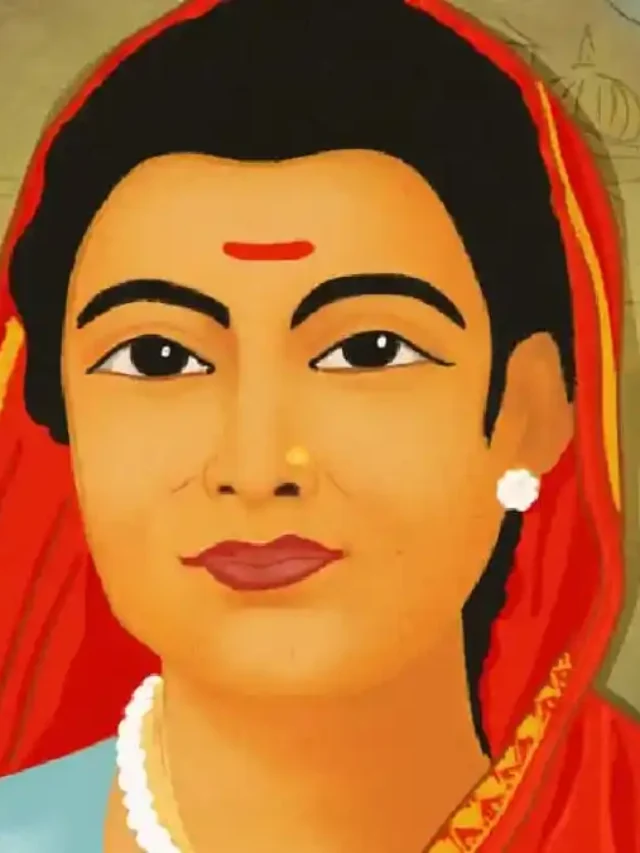India vs South Africa 1st ODI 2025 : Ranchi Match Preview, Pitch Report, Weather, Squad Details
Milkha Singh’s Grit Legacy: 9 Valuable Lessons from the Flying Sikh

Milkha Singh
Milkha Singh: A Comprehensive Biography The Flying Sikh, Milkha Singh One of India’s greatest athletes and a representation of tenacity, fortitude, and patriotism, Milkha Singh was born in Govindpura, a small village in Multan district, in undivided India, which is now in Pakistan, on November 20, 1929 (official records frequently state October 8, 1935). From a refugee during the partition to an Olympic legend, his life story is both tragic and inspirational.
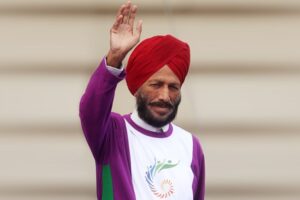
Childhood and Misfortune
A Sikh Rathore Rajput family was the birthplace of Milkha Singh. Despite a modest upbringing and limited resources, he lived a peaceful life before India’s 1947 Partition. His family was severely affected by the violence and bloodshed of the partition; he saw his parents, two sisters, and a brother brutally murdered. When Milkha fled to India as a teenager, he was devastated and alone.
To escape the violence and intercommunal riots, he travelled to Delhi by train.He fought to survive in a refugee camp at Old Delhi Railway Station with family members. During this desperate time in his life, he even contemplated committing crimes, but destiny had other ideas.
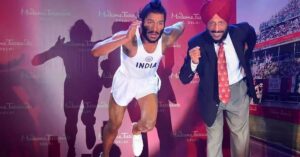
Enlisting in the Army and Learning About Sports
The moment Milkha Singh enlisted in the Indian Army was a turning point in his life. He made several attempts before being chosen on his fourth try. His athletic abilities were discovered while he was assigned to the Electrical Mechanical Engineering (EME) unit in Secunderabad.
The army gave him the opportunity, discipline, and structure he needed to train. His ascent as an athlete was fuelled by his dedication, innate talent, and will to overcome his past.
Singh started running cross-country and soon rose to the top of his unit’s running rankings. His career took off after he won his first significant race, a 400-meter race at the Services meet.
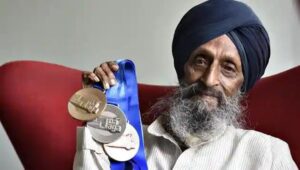
Breakthrough on a National and International Level
Milkha Singh made his debut for his country at the 1956 Summer Olympics in Melbourne, but he did not take home a medal. But it was a teaching moment that motivated him to work out even more. He adopted strict training regimens after studying the strategies of accomplished athletes.
The actual breakthrough occurred in 1958. He became the first Indian athlete to win an individual gold medal at the Commonwealth Games in Cardiff, where he won the gold medal in the 440 yards, or roughly 400 meters. He also took home gold in the 200- and 400-meter events at the Tokyo Asian Games that same year.
He became a national hero as a result of these triumphs, and the nation began to celebrate his accomplishments.
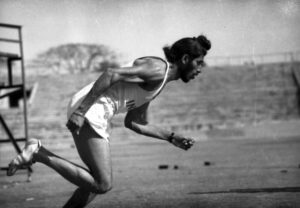
The Legendary Rome Olympics of 1960
The 1960 Summer Olympics in Rome were arguably Milkha Singh’s most pivotal event. He competed in the 400 meters, where he was among the front-runners for a medal. Milkha ran the race of his life, missing the bronze by just 0.1 seconds and finishing fourth in a race full of tension and exceptional competitors.
This performance was praised worldwide even though it did not result in a medal. His final time of 45.73 seconds was a national record for 40 years, and he broke the Olympic record in the heats and semi-finals. His near-miss turned into a legend and greatly aided in his rise to prominence.
After this race, Milkha Singh’s performance against Pakistani sprinter Abdul Khaliq in Lahore impressed Pakistan’s General Ayub Khan, who gave him the nickname “The Flying Sikh,” which he would always use.
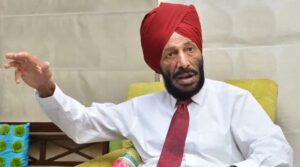
Subsequent Career and Input
In international competitions, Milkha Singh kept up her strong performance. At the 1962 Asian Games, he took home two more gold medals in the 400-meter and 4×400-meter relays. But as he grew older and sustained injuries, he eventually gave up competitive sports.
After retiring, Singh remained active in both sports and public service. He was named Punjab’s Director of Sports, where he oversaw the development of young athletes and encouraged sports in the region. He persisted in motivating upcoming generations because he thought that sports had the ability to improve both individuals and society.
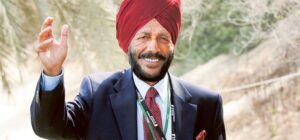
Individual Life
The Indian women’s volleyball team’s former captain, Nirmal Kaur, wed Milkha Singh in 1962. They had three daughters and a son, Jeev Milkha Singh, who went on to become a well-known professional golfer worldwide. Despite their accomplishments, the family kept a low profile because they valued humility and discipline.
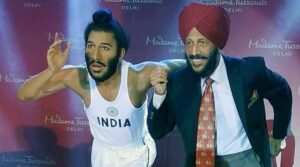
Honours and Legacy
Throughout his life, Milkha Singh was bestowed with numerous accolades and distinctions, such as:
- One of India’s greatest civilian honours is the Padma Shri (1959).
- In 1958, he won the Helms World Trophy for being Asia’s best athlete.
- Several statues, stadiums, and events bear his name.
His life story captured the nation’s imagination and became a symbol of tenacity and patriotism. Bollywood brought his amazing journey to the big screen in 2013 with the Farhan Akhtar-starring biopic “Bhaag Milkha Bhaag,” which was directed by Rakeysh Omprakash Mehra. His story was told to a new generation by the hugely successful movie.
Singh gave the film’s profits to charity, specifically to support athletes from disadvantaged backgrounds. He maintained his modesty and strong ties to the principles of diligence, self-control, and patriotism.
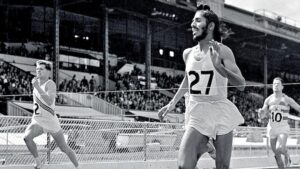
Death and the Last Years
Long into his eighties, Milkha Singh was still coaching athletes and promoting sports. Regretfully, in May 2021, Milkha Singh and his spouse contracted COVID-19. Following the death of Nirmal Kaur on June 13, 2021, Milkha Singh passed away on June 18, 2021, at the age of 91.
The nation mourned their passing. Athletes, politicians, celebrities, and millions of Indians whose lives had been impacted by his story all paid their respects.
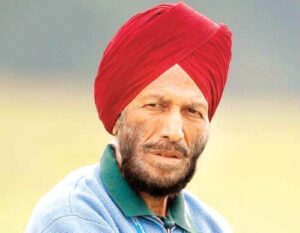
In conclusion
The life of Milkha Singh is proof of the ability of the human spirit to triumph over trauma and hopelessness. He transformed personal tragedy into national glory by becoming a worldwide sports icon after losing his family during the partition. Generations have been inspired by his discipline, passion, and humility. Even though the Flying Sikh is no longer with us, his legacy endures in the hearts of millions of people as well as on the tracks.
ALSO READ THIS: Discover Your Inner Strength on Hanuman Jayanti, April 12, 2025.
